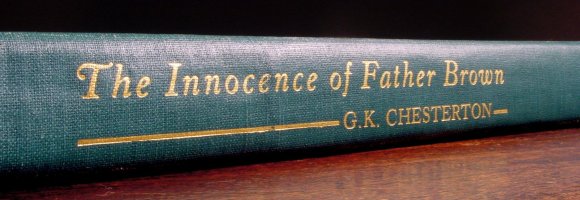Father Brown and other characters
What is so innocent about Father Brown? He is a small, humble priest who also happens to be a good detective. Why is he such a good detective? He often hears confessions of criminals, which only adds to his knowledge of how people act. Read the book to see Father Brown’s uncanny detective sense.
Criminal turned detectiveIn the beginning of the book we meet Flambeau, the most notorious criminal in Europe. Father Brown catches him in Chapter 4. In Chapter 5, we meet Flambeau with his friend, “a small dusty-looking Roman Catholic priest, who looked particularly out of place.” This is Father Brown, now Flambeau’s friend. How did a criminal become the priest’s sidekick? |
Detective turned criminalFor this was Valentin himself, the head of the Paris police and the most famous investigator of the world; and he was coming from Brussels to London to make the greatest arrest of the century. Valentin eventually turns up a murderer. How could this be? Read Chapter 2 to find out. |
“The Queer Feet”—An excerpt
Father Brown’s way of solving mysteries is very rational. Here is an excerpt from Chapter 3 that presents some of the evidence that Father Brown used to solve the mystery of “The Queer Feet.”
The priest began a little to allow his thoughts to wander and his animal senses, which were commonly keen, to awaken. ... When he became conscious of the thing he found what it was: only the ordinary patter of feet passing the door, which in an hotel was no very unlikely matter. Nevertheless, he stared at the darkened ceiling, and listened to the sound.
The footsteps outside at any given moment were such as one might hear in any hotel; and yet, taken as a whole, there was something very strange about them.
First, there came a long rush of rapid little steps, such as a light man might make in winning a walking race. At a certain point they stopped and changed to a sort of slow, swinging stamp. ... The moment the last echoing stamp had died away would come again the run or ripple of light, hurrying feet, and then again the thud of the heavier walking. ... Father Brown had the kind of head that cannot help asking questions; and on this apparently trivial question his head almost split. ... Why on earth should a man run in order to walk? Or, again, why should he walk in order to run? Yet no other description would cover the antics of this invisible pair of legs.
What is the explanation of these mysterious footsteps? Read Chapter 3 to find out.
| Title | The Innocence of Father Brown. Read about Father Brown on Wikipedia. |
|---|---|
| Author | G. K. Chesterton (1874–1936). Read about G. K. Chesterton on Wikipedia. |
| Publisher | The Curtis Publishing Company, 1911. The first Sherlock Holmes mystery book was published in 1887. Chesterton’s first set, The Innocence of Father Brown, was published in 1911. |
| E-books |
|
